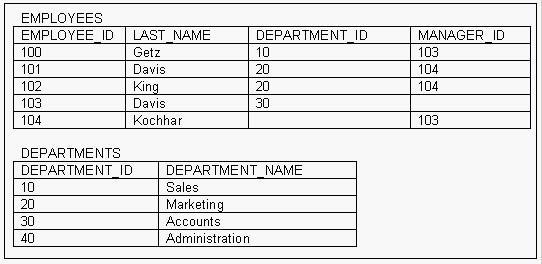出自:Oracle认证
Click the Exhibit button and examine the data in the EMPLOYEES and DEPARTMENTS tables. You want to retrieve all employees' last names, along with their managers' last names and their department names. Which query would you use?()
A:SELECT last_name, manager_id, department_name FROM employees e FULL OUTER JOIN departments d ON (e.department_id = d.department_id);
B:SELECT e.last_name, m.last_name, department_name FROM employees e LEFT OUTER JOIN employees m on ( e.manager_id = m.employee_id) LEFT OUTER JOIN departments d ON (e.department_id = d.department_id);
C:SELECT e.last_name, m.last_name, department_name FROM employees e RIGHT OUTER JOIN employees m on ( e.manager_id = m.employee_id) LEFT OUTER JOIN departments d ON (e.department_id = d.department_id);
D:SELECT e.last_name, m.last_name, department_name FROM employees e LEFT OUTER JOIN employees m on ( e.manager_id = m.employee_id) RIGHT OUTER JOIN departments d ON (e.department_id = d.department_id);
E:SELECT e.last_name, m.last_name, department_name FROM employees e RIGHT OUTER JOIN employees m on ( e.manager_id = m.employee_id) RIGHT OUTER JOIN departments d ON (e.department_id = d.department_id);
F:SELECT last_name, manager_id, department_name FROM employees e JOIN departments d ON (e.department_id = d.department_id) ;